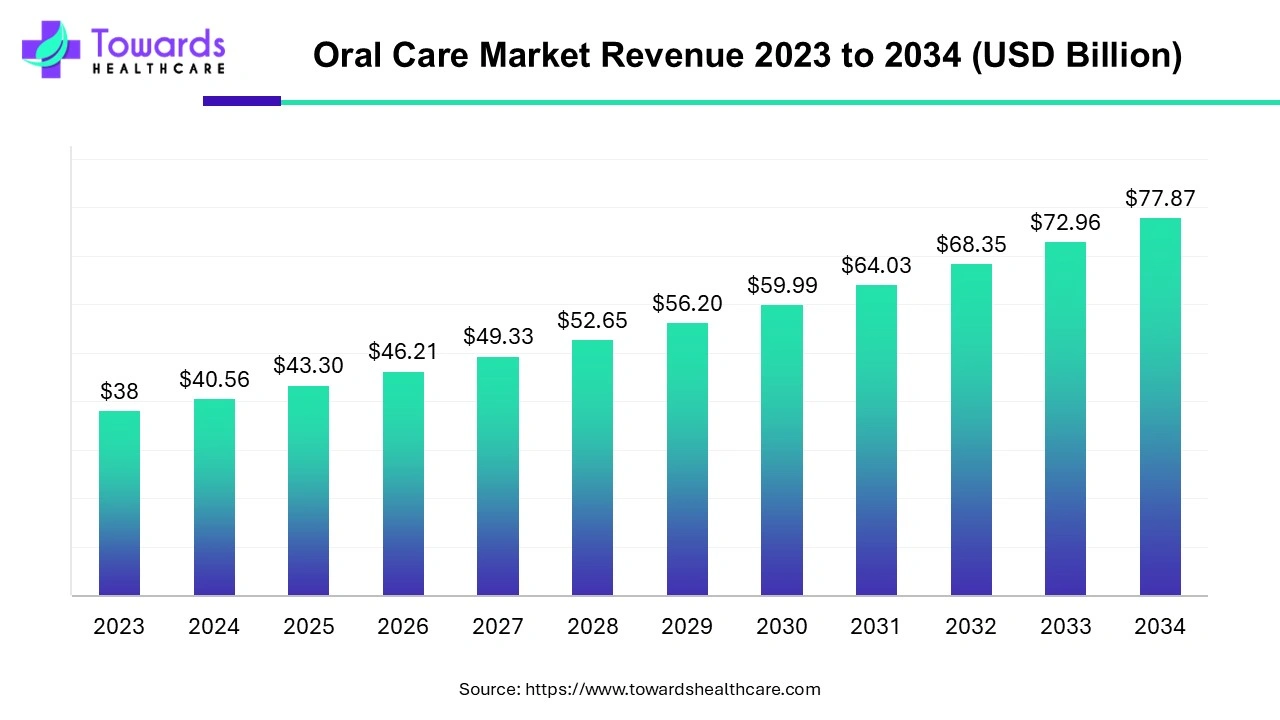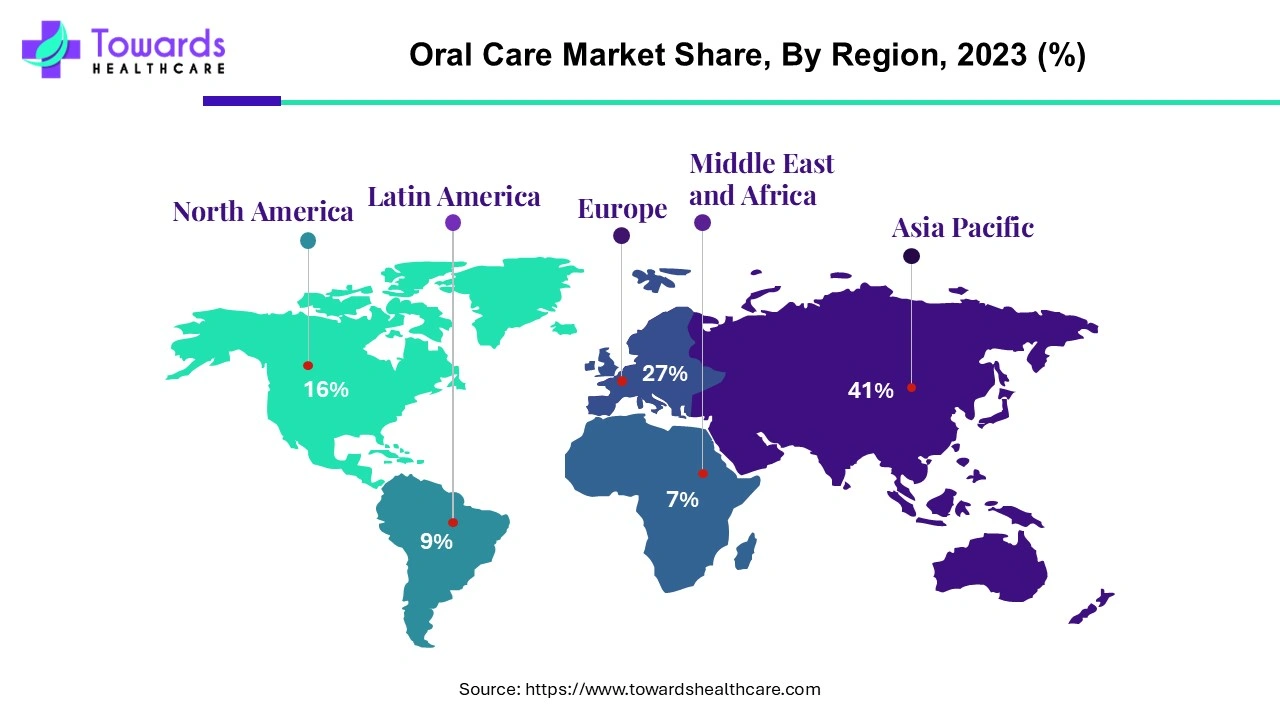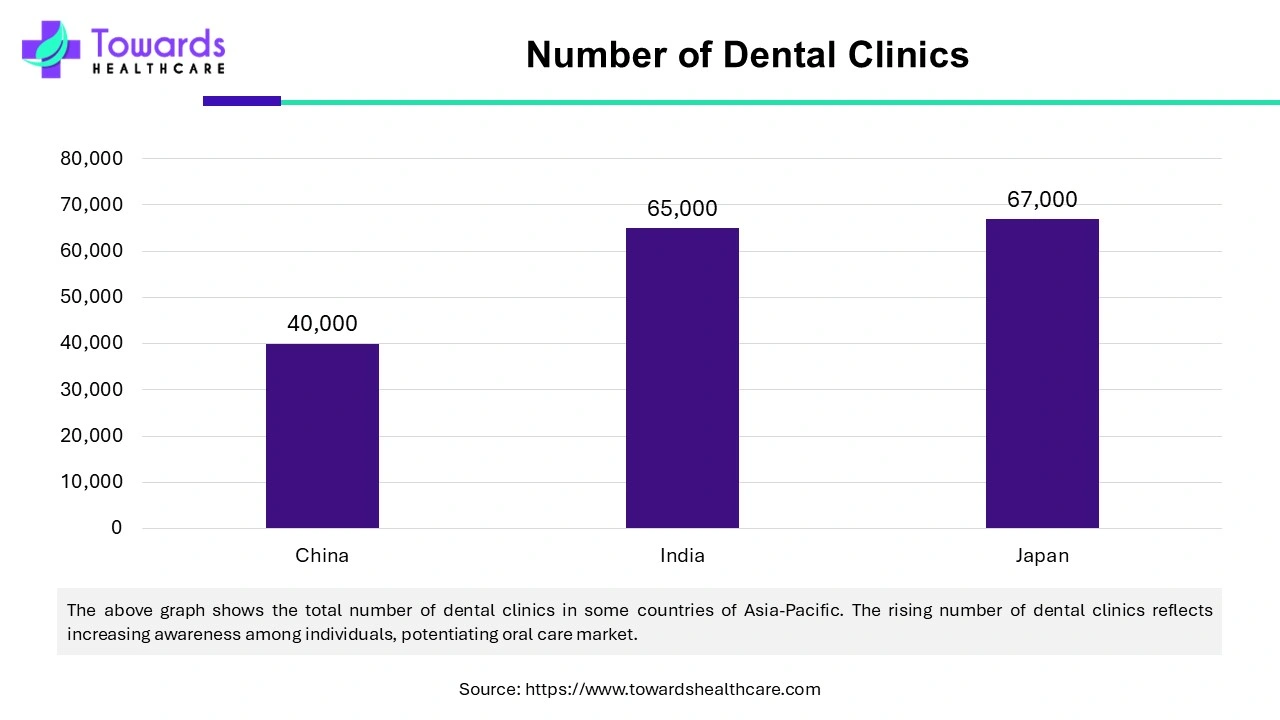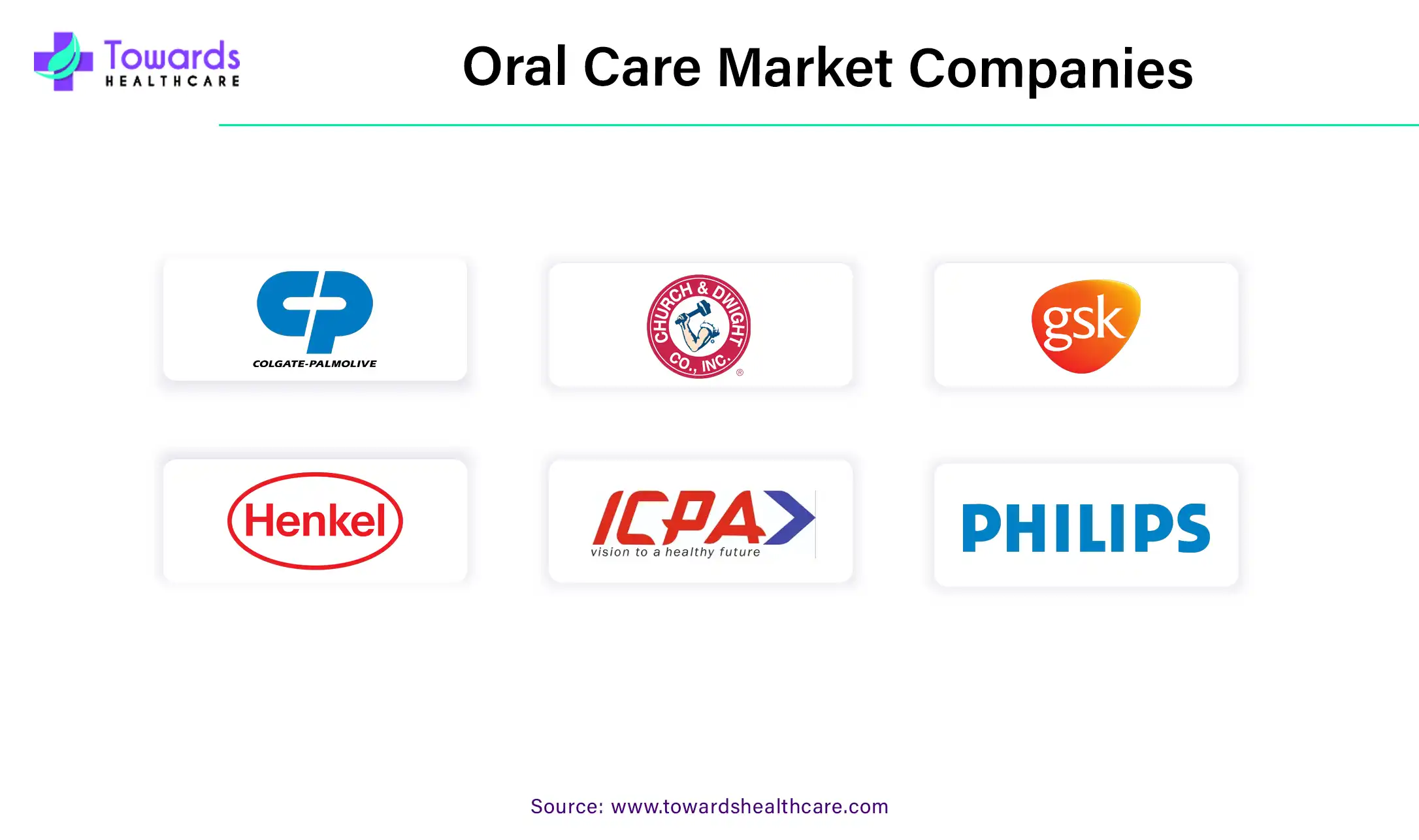December 2025

The oral care market was estimated at US$ 38 billion in 2023 and is projected to grow to US$ 77.87 billion by 2034, rising at a compound annual growth rate (CAGR) of 6.74% from 2024 to 2034.

Oral care refers to the practice of keeping the mouth clean and disease-free. It involves brushing and flossing the teeth and visiting the dental clinic regularly for dental X-rays, exams, and cleaning. Some common oral health problems include dental caries, gum diseases, cavities, bad breath, gingivitis, and periodontitis. Severe dental problems can lead to major chronic illness in the body. Hence, maintaining oral care is as important as treating any chronic disease. Numerous oral care products in the market enable the maintenance of oral health, resulting in healthier teeth and gums, and reduced need for dental works like fillings, crowns, bridges, implants, or dentures.
The increasing incidences of dental problems have increased awareness of oral care among individuals. According to the WHO, oral diseases are one of the most common non-communicable diseases worldwide, affecting an estimated 3.5 billion people annually. Although people from all age groups require oral care, children and the geriatric population are more vulnerable to dental problems. Additionally, increasing investments in oral hygiene boost the market.
The increasing awareness about oral health led to the development of the latest innovations to improve treatments by dental professionals. By implementing artificial intelligence, 3D printing, and augmented reality, dentists can improve the precision of treatments and enhance patient experience. Also, AI can analyze various factors such as saliva composition and bacterial content to detect early signs of dental issues. AI can also analyze images from several imaging techniques like X-rays, enabling accuracy and efficiency.
Internet of Things (IoT)-based devices like smart toothbrushes can monitor brushing patterns and provide real-time feedback. Researchers are also investigating certain techniques to stimulate the regeneration of enamel and dentin, revolutionizing the traditional treatment of cavities and tooth decay. Additionally, the increasing demand for environmental sustainability has resulted in the preparation of biodegradable toothbrushes and toothpaste tablets with minimal packaging.
The major challenge of the oral care market is the high cost of dental care treatment. Routine cleanings are often covered by dental insurance. Advanced oral care treatments like deep cleaning and root canals are more expensive, hampering patient adherence. Hence, many patients especially in low- and middle-income countries refrain from proper dental treatment. Additionally, many people become anxious or have a fear of dental procedures, leading to patient non-adherence.

Asia-Pacific dominated the oral care market share by 41% in 2023. The rising incidences of dental diseases, favorable government policies, and the latest innovations drive the market. It has been reported that around 8 out of 10 children and 9 out of 10 adults in India suffer from a major oral hygiene and health issue or disease. Oral health problems are common among Chinese adults accounting for 84.4% of individuals with dentition defects and 1.8% are edentulous.
In Japan, periodontal disease is the major dental problem surpassing dental caries, affecting 40.4% of men and 34.9% of women. The market is also driven by favorable reimbursement policies and government investments. According to the WHO, 95% of Chinese dental patients received coverage from the largest government health financing scheme. Additionally, frequent oral health camps in the region increase awareness and facilitate early detection of oral diseases.

North America is anticipated to grow fastest in the oral care market during the forecast period. The increasing awareness of oral care and hygiene, technological advancements, favorable government policies, increasing investments, and the presence of key players drive the market. In September 2024, the Canadian Government launched an ad campaign in support of the Canadian Dental Care Plan (CDCP). It has already covered 650,000 people out of 2.4 million Canadians accounting for more than $442 million in dental expenses covered.
The Early and Periodic Screening, Diagnostic, and Treatment (EPSDT) program by the US government offers a comprehensive pathway to oral health treatment for low-income children and youth. In US, tooth decay is the most prevalent oral disease affecting 90% of adults aged 20 to 64 years, followed by gum disease, affecting 50% of adults aged 45 to 64 years.
Europe is expected to grow significantly in the oral care market during the forecast period. Due to the rising awareness about oral hygiene, the use of oral care products is increasing in Europe. Furthermore, the development as well as the increasing use of various dental accessories is also contributing to the same. Thus, all these factors increase the market growth.
The increasing awareness about the importance of oral hygiene within the population is increasing the demand for the use of various oral care products. At the same time, the increasing dental or oral disorders are also enhancing the use of various oral care products.
The industries in Germany are developing natural dental products to meet the rising demand of the population due to growing awareness. Furthermore, they are also focusing on the development of new dental accessories. This, in turn, increases the collaboration between the companies that are supported by the government investments.
By product, the toothbrush segment held a dominant presence in the oral care market in 2023 and is projected to expand rapidly in the market during the forecast period. A toothbrush is a predominant requirement of all individuals globally. Due to the presence of soft bristles, it reaches every tooth in the mouth providing complete cleaning and preventing gum disease. It is the most easily available and cheaper alternative among all oral care products. The advent of the latest technologies like sensors in toothbrushes and electric toothbrushes further potentiate the segment growth.
By distribution channel, the supermarkets/hypermarkets segment held the largest share of the oral care market in 2023. Supermarkets/hypermarkets possess a wide range of oral care products at different prices and of different brands, allowing customers to choose any suitable product. Some supermarkets provide 24/7 facilities, hence they are easily accessible and the products can be purchased anytime.
By distribution channel, the online retail segment is expected to grow fastest in the market over the coming years. Online retail offers special discounts and consumers can purchase products in the comfort of their homes. Facilities like same-day delivery and special discounts promote the segment growth.
Prabha Narasimhan, MD & CEO, Colgate-Palmolive India, commented that fostering healthy oral care habits among Indians is a privilege and responsibility of the company. He emphasized the significance of nighttime brushing, especially in the festive season to safeguard people’s smiles and ensure a festive season free from dental problems, thereby leading to dental health standards of the nation.

By Product
By Distribution Channel
By Region
A videoscope, or electronic scope, is an endoscope with a built-in camera that converts images into electrical...
December 2025
December 2025
December 2025
November 2025